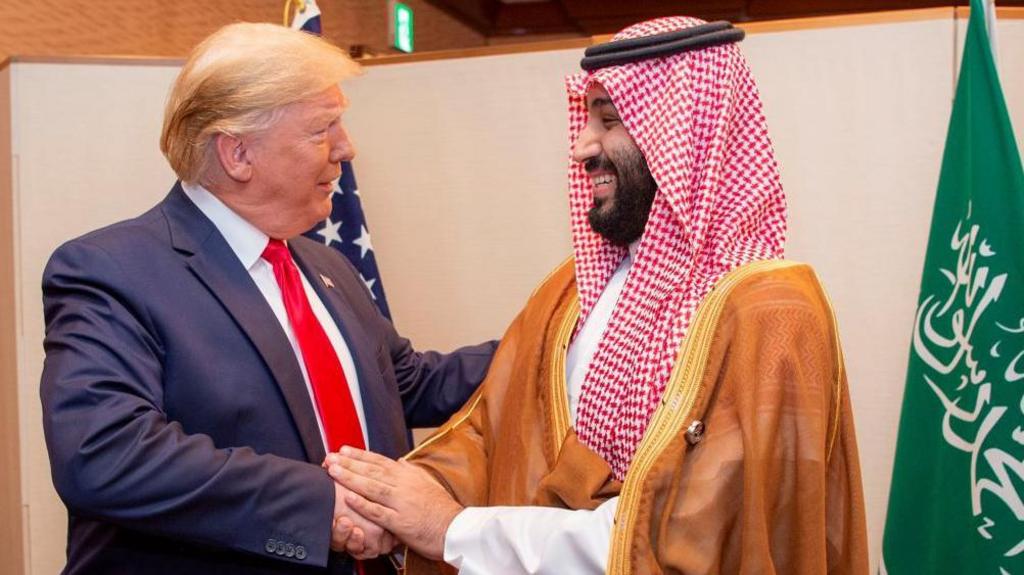President Trump’s upcoming visit to Gulf states this week aims to secure substantial new investment for the US economy. Economist Karen Young, a senior fellow at the Middle East Institute, notes that President Trump seeks a highly visible announcement of increased Gulf investment.
She explains, “He wants a prominent display detailing the investment’s allocation and projected impact on job creation and domestic manufacturing.” His trip begins in Riyadh on May 13th, with a meeting with Crown Prince Mohammed bin Salman.
Subsequently, he will participate in a Gulf leaders’ summit on May 14th, followed by visits to Qatar and the UAE, concluding the three-day trip on May 15th. The visit to Saudi Arabia was initially planned as the first overseas trip of his second term, highlighting the region’s economic significance.
This prioritization underscores the importance of securing new investment from Gulf states, particularly from their sovereign wealth funds, to demonstrate the success of his “America First” agenda. Top Wall Street and Silicon Valley executives are accompanying him, participating in a Saudi-US investment forum featuring CEOs from major corporations.
This initiative comes amidst economic headwinds, including the impact of President Trump’s import tariffs on global trade and the US economy, which experienced its first decline in three years during the first quarter. While Prince Mohammed previously announced a $600 billion Saudi investment in the US over four years, Trump reportedly aims for $1 trillion, including military equipment purchases.
Saudi commentator Ali Shihabi anticipates numerous economic agreements, including joint ventures and procurement of American goods and weapons. Saudi Arabia’s Public Investment Fund (PIF), managing $925 billion in assets, already holds substantial US investments.
The UAE has also pledged $1.4 trillion in US investment over ten years. However, Young cautions against overestimating the short-term impact, describing these figures as long-term strategic moves. Significant arms sales are expected, potentially exceeding $100 billion, including missiles and aircraft.
The Biden administration previously halted offensive weapons sales to Saudi Arabia due to concerns about the Yemen conflict and the Khashoggi assassination. However, sales resumed, with some suggesting US aims to secure Saudi assistance in resolving the Gaza conflict. Shihabi states Saudi Arabia seeks streamlined procurement of military equipment.
Artificial intelligence will also be a key focus, with discussions centered on attracting Gulf investment in US tech firms and enhancing access to American semiconductors. The UAE and Saudi Arabia are heavily investing in AI and tech diversification. The Trump administration recently rescinded Biden-era chip export restrictions, paving the way for direct negotiations.
While Trump seeks Gulf investment for the US, Saudi Arabia concurrently aims to attract American investment in its Vision 2030 program, encompassing significant construction projects and economic diversification. However, foreign direct investment in Saudi Arabia declined in 2024, and the recent fall in oil prices has added financial pressure.
The decline in oil prices, partly attributed by some to Opec+’s increased output potentially aimed at pleasing Trump, has added pressure to Saudi finances. The US-Saudi Business Council hopes Trump’s visit will encourage greater American investment in Saudi Arabia’s AI, healthcare, and education sectors.
For Saudi Arabia, the visit strengthens ties with a key Western ally, while for President Trump, it presents an opportunity to showcase significant investment deals bolstering his economic agenda. Shihabi concludes, “President Trump seeks a headline of substantial US investments, and this trip will deliver that.”
The planned layoffs mean the Japanese carmaker has now cut about 15% of its workforce in the past year.
In the first major diplomatic trip during his second term, the president is hoping to secure significant new investment in the US in the four-day trip to Saudi Arabia, Qatar and UAE.
Chinese online retailers had previously relied on the “de minimis” loophole to ship low-value items to the US.
The government insists hormone-fed beef will not appear in the UK, but farmers still have questions.
It is not an end to the trade war, but it is a significant truce, writes the BBC’s economics editor.

